Container Specifications |
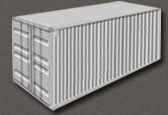 |
DRY CARGO CONTAINERS |
| |
Container Weight |
Container Weight |
Door Open |
| Type |
Gross (kg) |
Tare(kg) |
Net (kg) |
Length (m) |
Width (m) |
Height (m) |
Capacity (m3) |
Width (m) |
Height(m) |
| 20 ft |
24,000 |
3,050 |
20,950 |
5.449 |
2.290 |
2.244 |
26.70 |
2.276 |
2.261 |
| 40 ft |
30,480 |
4,520 |
25,960 |
11.690 |
2.250 |
2.244 |
57.10 |
2.276 |
2.205 |
CHARACTERISTICS |
Manufactured from either Aluminium or steel, they are suitable for most types of cargo / general cargo. Aluminium containers have a slightly larger payload than steel, and steel containers have a slightly larger internal cube |
|
Container Specifications |
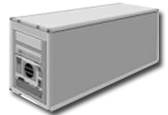 |
REFRIGERATED CONTAINERS |
| |
Container Weight |
Container Weight |
Door Open |
| Type |
Gross (kg) |
Tare(kg) |
Net (kg) |
Length (m) |
Width (m) |
Height (m) |
Capacity (m3) |
Width (m) |
Height(m) |
| 20 ft |
24,000 |
3,050 |
20,950 |
5.449 |
2.290 |
2.244 |
26.70 |
2.276 |
2.261 |
| 40 ft |
30,480 |
4,520 |
25,960 |
11.690 |
2.250 |
2.244 |
57.10 |
2.276 |
2.205 |
CHARACTERISTICS |
Manufactured from either Aluminium or steel, they are suitable for most types of cargo / general cargo. Aluminium containers have a slightly larger payload than steel, and steel containers have a slightly larger internal cube |
|
Container Specifications |
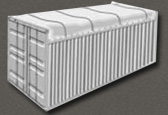 |
OPEN TOP CONTAINERS |
| |
Container Weight |
Container Weight |
Door Open |
| Type |
Gross (kg) |
Tare(kg) |
Net (kg) |
Length (m) |
Width (m) |
Height (m) |
Capacity (m3) |
Width (m) |
Height(m) |
| 20 ft |
24,000 |
3,050 |
20,950 |
5.449 |
2.290 |
2.244 |
26.70 |
2.276 |
2.261 |
| 40 ft |
30,480 |
4,520 |
25,960 |
11.690 |
2.250 |
2.244 |
57.10 |
2.276 |
2.205 |
CHARACTERISTICS |
Manufactured from either Aluminium or steel, they are suitable for most types of cargo / general cargo. Aluminium containers have a slightly larger payload than steel, and steel containers have a slightly larger internal cube |
|
Container Specifications |
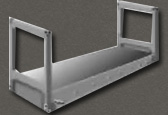 |
FLAT RACK CONTAINERS |
| |
Container Weight |
Container Weight |
Door Open |
| Type |
Gross (kg) |
Tare(kg) |
Net (kg) |
Length (m) |
Width (m) |
Height (m) |
Capacity (m3) |
Width (m) |
Height(m) |
| 20 ft |
24,000 |
3,050 |
20,950 |
5.449 |
2.290 |
2.244 |
26.70 |
2.276 |
2.261 |
| 40 ft |
30,480 |
4,520 |
25,960 |
11.690 |
2.250 |
2.244 |
57.10 |
2.276 |
2.205 |
CHARACTERISTICS |
Manufactured from either Aluminium or steel, they are suitable for most types of cargo / general cargo. Aluminium containers have a slightly larger payload than steel, and steel containers have a slightly larger internal cube |
|
Container Specifications |
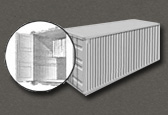 |
GARMENT CONTAINERS |
| |
Container Weight |
Container Weight |
Door Open |
| Type |
Gross (kg) |
Tare(kg) |
Net (kg) |
Length (m) |
Width (m) |
Height (m) |
Capacity (m3) |
Width (m) |
Height(m) |
| 20 ft |
24,000 |
3,050 |
20,950 |
5.449 |
2.290 |
2.244 |
26.70 |
2.276 |
2.261 |
| 40 ft |
30,480 |
4,520 |
25,960 |
11.690 |
2.250 |
2.244 |
57.10 |
2.276 |
2.205 |
CHARACTERISTICS |
Manufactured from either Aluminium or steel, they are suitable for most types of cargo / general cargo. Aluminium containers have a slightly larger payload than steel, and steel containers have a slightly larger internal cube |
|
Container Specifications |
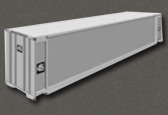 |
HIGH CUBE CONTAINERS |
| |
Container Weight |
Interior Measurement |
Door Open |
| Type |
Gross (kg) |
Tare(kg) |
Net (kg) |
Length (m) |
Width (m) |
Height (m) |
Capacity (m3) |
Width (m) |
Height(m) |
| 40 ft |
30,480 |
3,980 |
26,500 |
12,031 |
2.352 |
2.698 |
76.30 |
2.340 |
2.585 |
| 45 ft |
30,480 |
4,800 |
25,680 |
13.544 |
2.352 |
2.698 |
86.00 |
2.340 |
2.585 |
|
U.L.D Container Specifications |
| Type |
IATA ID
Code (New) |
Tare
Weight (kg) |
Base Size |
Limitation Weight |
| Length (cm) |
Width (cm) |
Thick (cm) |
Max Gross (kg) |
Square (kg/m2) |
| 20 Ft |
PGE |
500 - 535 |
605 |
243 |
5.4 |
11.340 |
3.905 |
| 16 Ft |
PRA |
380 - 470 |
498 |
243 |
5.4 |
11.340 |
3.905 |
| 96 Inc |
PMP / PMC |
115 - 125 |
317 |
243 |
- |
6.803 |
1.925 |
| 88 Inc |
PAP / PAG |
110-115 |
317 |
223 |
- |
6,803 |
1.925 |
| PLB |
PLB |
85-90 |
317 |
153 |
2.5 |
3,175 |
976 - 3,051 |
|
AKE Container |
AAF Container (lower deck) |
| IATA ID CODE |
AKE |
| BASE SIZE |
|
| Length |
156 cm |
| Width |
153 cm |
| Tare Weight |
90 - 105 kg |
| WEIGHT LIMITATION |
|
| Max Gross Weight |
1,587 kg |
| Limitation Res Square |
976 kg/m2 |
| Limitation Res Square |
4.3 m3 |
|
| IATA ID CODE |
AKE |
| BASE SIZE |
|
| Length |
317 cm |
| width |
223 cm |
| Height |
162 cm |
| Tare Weight |
260 kg |
| WEIGHT LIMITATION |
|
| Max Gross Weight |
6,033 kg |
| Limitation Res Square |
1,952 kg/m2 |
| Internal Volume |
9,91 m3 |
|
AAP Container (garments) |
MKN/RKN Container (refcon) |
| IATA ID CODE |
AK |
| BASE SIZE |
|
| Length |
317cm |
| Width |
223 cm |
| Height |
162 cm |
| Tare Weight |
225-310 kg |
| WEIGHT LIMITATION |
|
| Max Gross Weight |
3,033 kg |
| Limitation Res Square |
1,464 kg/m2 |
| Internal Volume |
10.4 m3 |
| GOH Max |
1,800 - 3,000 kg |
|
| IATA ID CODE |
AKE |
| BASE SIZE |
|
| Length |
156cm |
| Width |
153cm |
| Hight |
162cm |
| Tare Weight |
185 - 380 kg |
| WEIGHT LIMITATION |
|
| Max Gross Weight |
1,587 kg |
| Limitation Res Square |
976 kg/m2 |
| Internal Volume |
3.2 - 3.5 m3 |
| Dry Ice Max |
40 - 60 |
|
Chargeable Weight Convertor |
|
|
Inconterms |
As of January 1, 2011 the eighth edition, Incoterms 2010, have taken effect. The changes therein affect all of the five terms previously listed in section D, which are now obsolete and have been replaced with these three:
- DAT (Delivered at Terminal)
- DAP (Delivered at Place)
- DDP (Delivered Duty Paid)
The new terms apply to all modes of transport.
Group C - Main carriage paid
CFR or CNF - Cost and Freight (named destination port)
Seller must bear the cost and freight to bring the goods to the destined port. The risk is transferred to the buyer once the goods have crossed the ship's rail. Maritime transport only and Insurance for the goods is NOT included. Insurance is at the Cost of the Buyer.
CIF - Cost, Insurance and Freight (named destination port)
Exactly the same as CFR, except that the seller must procure and pay for insurance for the buyer. Maritime transport only.
CPT - Carriage Paid To (named place of destination)
The general/containerized/multimodal equivalent of CFR. The seller pays for carriage to the named place of destination. The risk passes when the goods are handed over to the first carrier.
CIP - Carriage and Insurance Paid (To) (named place of destination)
The containerized transport/multimodal equivalent of CIF. Seller pays for carriage and insurance to the named destination point, but risk passes when the goods are handed over to the first carrier.
Group D - Arrival
New arrival incoterms have been discussed in the Incoterms 2010 brought out by the ICC and DAT and DAP have replaced DAF,DES,DEQ and DDU. Given here is a small explanation provided by the ICC. Two new Incoterms rules - DAT and DAP - have replaced the Incoterms 2000 rules DAF, DES, DEQ and DDU
The number of Incoterms rules have been reduced from 13 to 11. This has been achieved by substituting two new rules that may be used irrespective of the agreed mode of transport - DAT, Delivered at Terminal, and DAP, Delivered at Place - for the Incoterms 2000 rules DAF, DES, DEQ and DDU.
Under both new rules, delivery is made at the named destination: in DAT, at the buyer's disposal unloaded from the arriving vehicle (as under the former DEQ rule); in DAP, likewise at the buyer's disposal, but ready for unloading (as under the former DAF, DES and DDU rules). The new rules make the Incoterms 2000 rules DES and DEQ superfluous. The named terminal in DAT may well be in a port, and DAT can therefore safely be used in cases where the Incoterms 2000 rule DEQ once was. Likewise, the arriving "vehicle" under DAP may well be a ship and the named place of destination may well be a port: consequently, DAP can safely be used in cases where the Incoterms 2000 rule DES once was. These new rules, like their predecessors, the goods are "delivered", with the seller bearing all the cost (other than those related to import clearance, where applicable) and risks involved in bringing the goods to the named place of destination.
DAT- Delivered at terminal (named destination place)
This term may be used for all transport modes. The seller delivers the goods when they are placed at the disposal of the buyer on the arriving means of transport ready for unloading at the named place of destination. As the risk is transferred from the seller to the buyer, at the agreed place of destination, the buyers are advised to specify clearly ,the point within the agreed place of destination. If the seller is responsible for clearing the goods, paying duties etc consideration should be given to using the DDP term.
DAP - Delivered At Place (named destination place)
As per this term the seller delivers the goods when they are placed at the disposal of the buyer on the arriving means of transport, ready for unloading at the named place of destination. This is exactly what the old Incoterm DDU stipulated.
DDP - Delivered Duty Paid (named destination place)
According to this term the seller pays all the transportation cost and bears all risk until the goods have been delivered and pays the duty. Also used interchangeably with the term "Free Domicile". The most comprehensive term for the buyer. In most of the importing countries, taxes such as (but not limited to) VAT and excises should not be considered prepaid being handled as a "refundable" tax. Therefore VAT and excises usually are not representing a direct cost for the importer since they will be recovered against the sales on the local (domestic) market.
OLD INCOTERMS
DAF - Delivered At Frontier (Delivery Place)
This term is used when the goods are transported by rail and road. The seller pays for transportation to the named place of delivery at the frontier. The buyer arranges for customs clearance and pays for transportation from the frontier to his factory. The passing of risk occurs at the frontier.
DES - Delivered Ex Ship (named port)
Where goods are delivered ex ship, the passing of risk does not occur until the ship has arrived at the named port of destination and the goods made available for unloading to the buyer. The seller pays the same freight and insurance costs as he would under a CIF arrangement. Unlike CFR and CIF terms, the seller has agreed to bear not just cost, but also Risk and Title up to the arrival of the vessel at the named port. Cost for unloading the goods and any duties, taxes, etc… are for the Buyer. A commonly used term in shipping bulk commodities, such as coal, grain, dry chemicals - - - and where the seller either owns or has chartered, their own vessel.
DEQ - Delivered Ex Quay (named port)
This is similar to DES, but the risk is not transferred, until the goods have been unloaded at the port of destination.
DDU - Delivered Duty Unpaid (named destination place)
This term means that the seller delivers the goods to the buyer to the named place of destination as per the contract of sale. The goods are not cleared for import or unloaded from any form of transport at the place of destination. The buyer is bound to bear the costs and risks for unloading, duty and any subsequent delivery beyond the place of destination. However, if the buyer wishes the seller to bear cost and risks associated with the import clearance, duty, unloading and subsequent delivery beyond the place of destination, then this all needs to be explicitly agreed upon in the contract of sale.
source: http://en.wikipedia.org/wiki/Incoterm
"S S International" makes every effort to ensure that the information that appear on its website is true and up-to- date. However, errors or omissions may occur, and for this reason, the User should not consider information to be accurate without first checking the accuracy of the information with S S International". None of the information or content on this website should be considered as an indubitable fact. S S International" cannot control how the User utilizes the information or content offered on this website and will therefore not be held responsible for deeds, acts or damages, whether direct or indirect, suffered by the User or third- parties which could be the consequence or arise from the use of said information or content."
|
| |
|
|